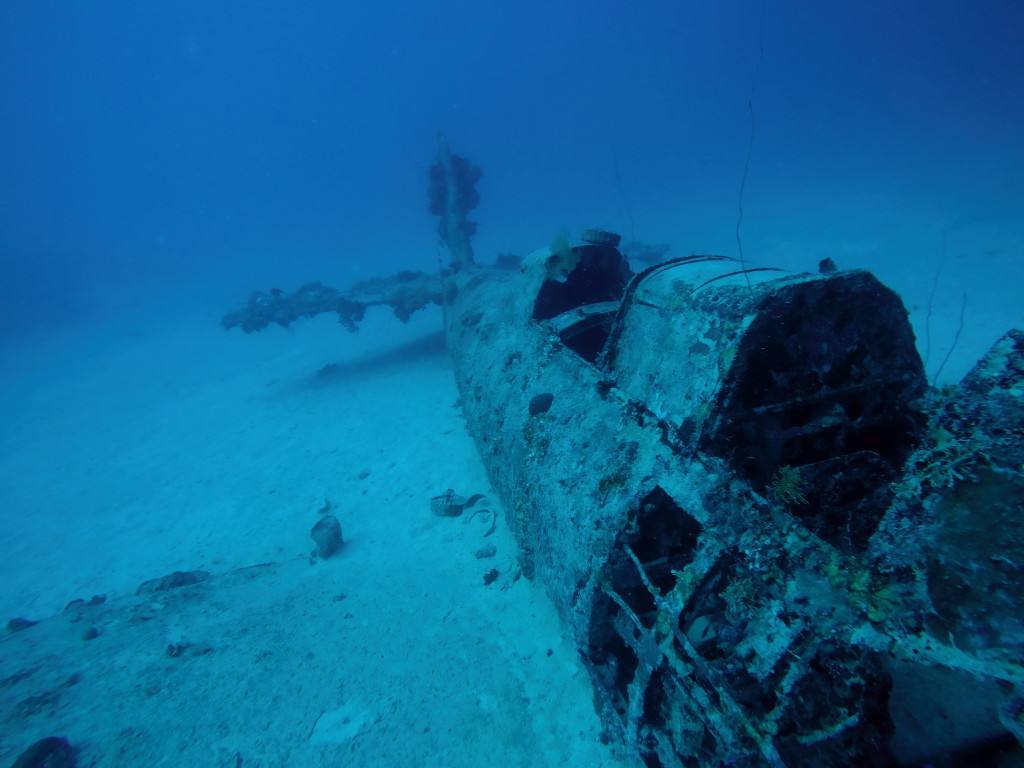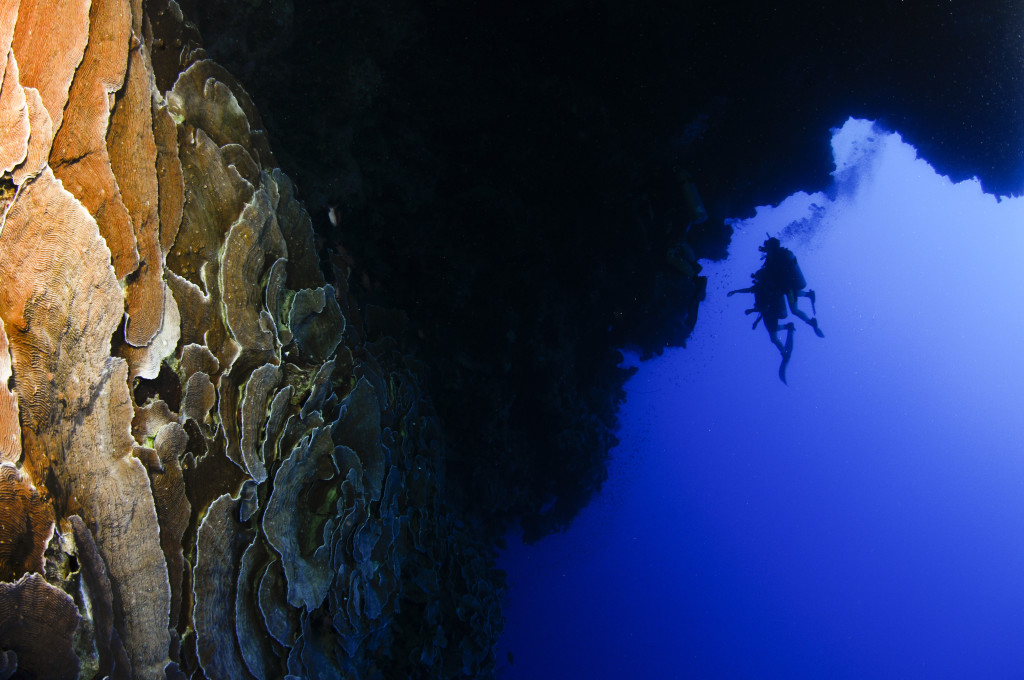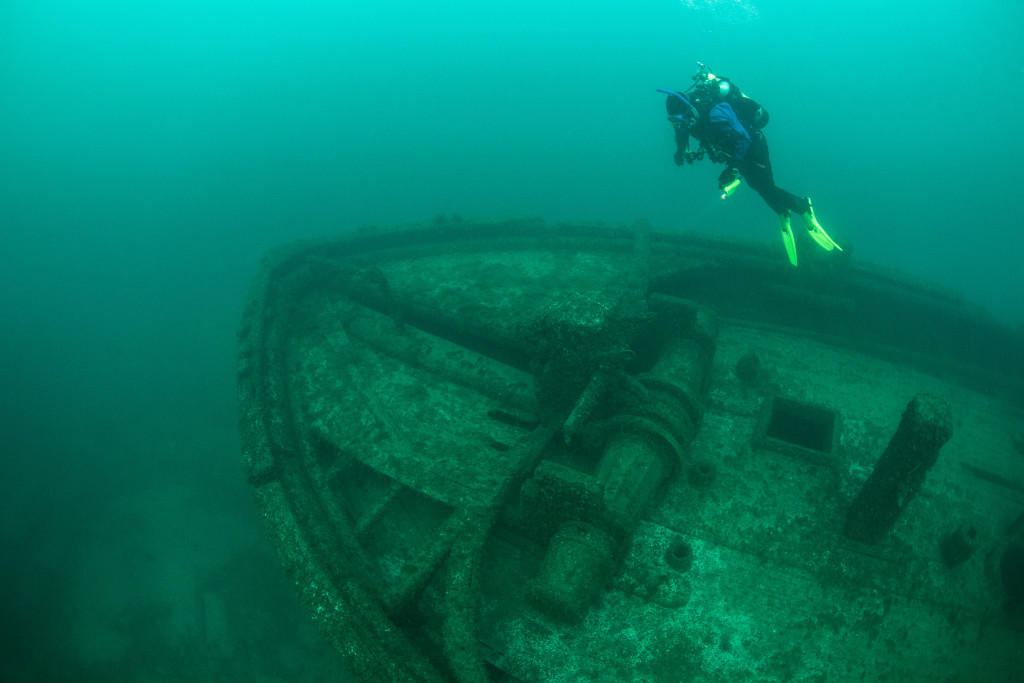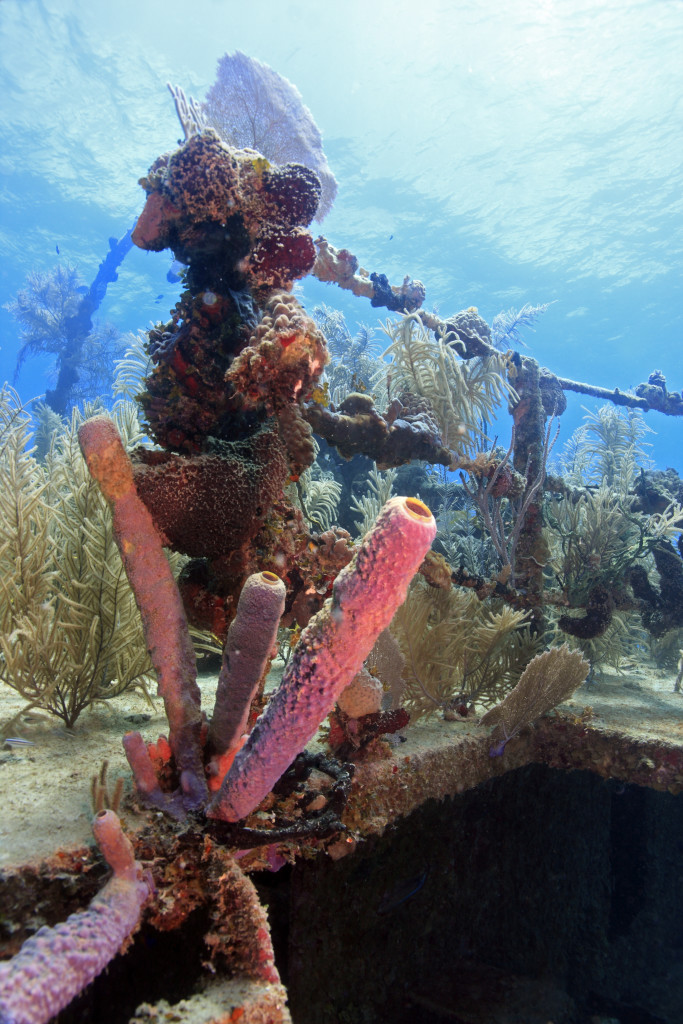Although tec diving is, by necessity, more complicated than straight recreational diving, a lot of spots throughout the world are ideal for both novice or everyday tec divers, and their recreational partners. Here’s a list of our top picks for five great tec diving destinations.
Chuuk Lagoon, Micronesia

A well known wreck-diving Mecca, Chuuk Lagoon is the site of the famous World War II Operation Hailstone, a 1944 assault during which the U.S. military decimated the Japanese Pacific fleet. Chuuk now hosts more than 6,000 divers annually. With over 40 sites comprised of cruisers, destroyers, tanks, planes and a submarine, each wreck has its own unique appeal, and many have become more akin to coral reefs with abundant life growing on them. While many of the wrecks lie at recreational depths, in the range of 60 to 130 feet (18 to 40 m), approximately 15 are in the range of 130 to 190 feet (40 to 60 m), including the famous San Francisco Maru. The rarely dived Katsuragisan Maru sits at 190 to 230 feet (58 to 70 m). Conditions here are usually ideal, with minimal currents, water temperatures between 82 and 85 F (28 to 29 C), and visibility from 50 to 100 feet (15 to 40 m).
Dahab, Egypt

Many documentaries have been made about Dahab’s infamous Blue Hole and its famous archway at around 165 to 185 feet (50 to 55 m), which leads out of the hole and onto the reef walls, plummeting to extreme depths. Many untrained recreational divers have lost their lives over the years attempting to swim through the arch, and the site has an eerie feel, with many memorials nearby. The site is excellent for technical-diver training, as well as for technical divers who wish to expand their limits — it’s shore-based; the currents are minimal; and visibility can be up to 130 feet (40 m). Dahab is also home to many other technical sites including the Canyon, a crack in the reef that drops to depths of more than 165 feet (50 m). Below the Canyon is Neptune’s Chair at 215 to 250 feet (70 to 80 m). Dahab is an affordable destination with easy diving conditions, and as most of the diving is shore-based, technical divers can run profiles and dive plans on their own daily schedules.
Malta, Mediterranean

Located in the Mediterranean, and easily accessible from most of Europe on short-haul flights, are the islands of Malta, Gozo and Comino, which offer visibility ranging from 100 to 130 feet (30 to 40 m) and minimal current in temperate waters. The dive sites around the islands include purpose-sunk wrecks, as well as historic shipwrecks, submarines and aircraft. Additionally, the geology around the island includes caverns and caves. The HMS Stubborn and the Bristol Beaufort WWII bomber are two of the popular deeper wrecks, in the range of 145 to 185 feet (42 to 56 m). The beauty of Malta and Gozo is that the diving can be conducted from boat or shore. Self-drive dive trips are popular, and the island is rich in culture and history for topside exploration as well.
Great Lakes, Canada and USA

Probably one of the best cold-water wreck-diving destinations in North America — if not the world — the Great Lakes include Lake Superior, Lake Michigan, Lake Huron, Lake Ontario and Lake Erie. As freshwater sites, the wrecks are in excellent condition and are not subject to the same deterioration as saltwater wrecks. Shipwrecks have occurred in the Great Lakes from the very earliest indigenous vessels to the famous tragedy of the bulk freighter SS Edmund Fitzgerald. Top tec-diving wrecks include the Gunilda, the Grace Channon, the Lakeland, a steel ship full of Nash automobiles from 1927, and the Cornelia B. Windiate, a wooden schooner with standing mast intact. These wrecks lie in the range of 180 to 260 feet (55 to 80 m), and water temperatures can range from 36 F (2 C) to a high of 50 F (10 C), so only the best drysuit, undergarments, heated underwear, good hood and dry gloves will do. Port cities such as Milwaukee, Wisconsin, offer fantastic dining, brew pubs, art museums and architecture; smaller, quaint villages like Rossport, Ontario offer cozy bed & breakfast inns. Divers who visit Isle Royale National Park can hike gorgeous, wooded trails and see mother moose with calves walking in streams.
Utila, Bay Islands, Honduras

For years, Utila has been famous as a destination to dive with whale sharks, drawing both backpackers and those seeking top-notch professional dive training to become PADI Divemasters or Instructors. But this tiny island is now becoming known as a top tec-diver training spot as well, with new, deeper sites recently discovered to appeal to technical divers. The north side of the island has deep walls, caverns and swim-throughs in the 150- to 260-foot (45 to 80 m) range. The east and south sides of the island offer numerous offshore seamounts and pinnacles, many inaccessible to recreational divers as the tops are at 130 feet (40 m) and drop to depths 262 feet (80 m) and deeper. Due to their offshore location, many of these seamounts feature abundant fish stocks, biodiversity and healthy coral coverage, reminiscent of the Caribbean 20 years ago. Full disclosure: The author is proud to be part of a tec- diving team from Utila Dive Center that has been discovering, exploring and mapping these new tec- diving sites.

